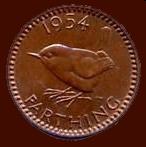














The Paragon Of Metal Detecting
Powered By Sispro1
British Sterling Currency - Numismatics,
Penny
For Reference ONLY
Everything For The Detectorist
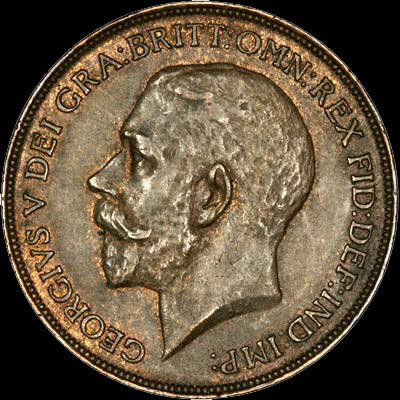
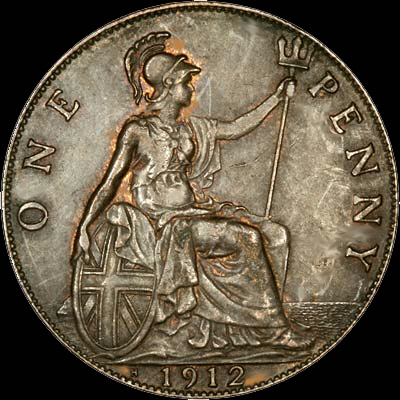
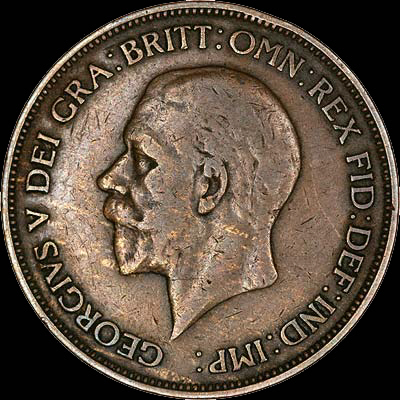
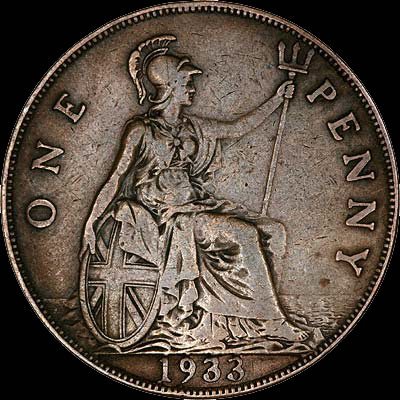
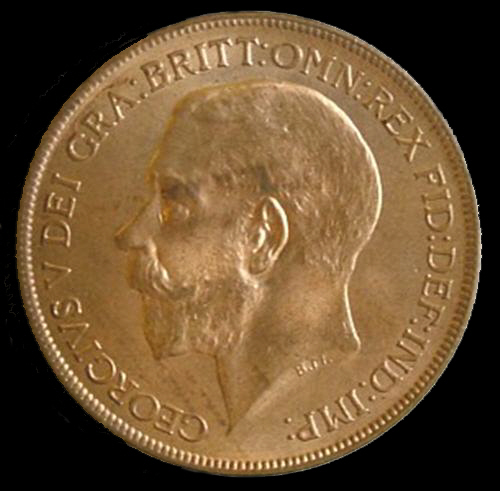
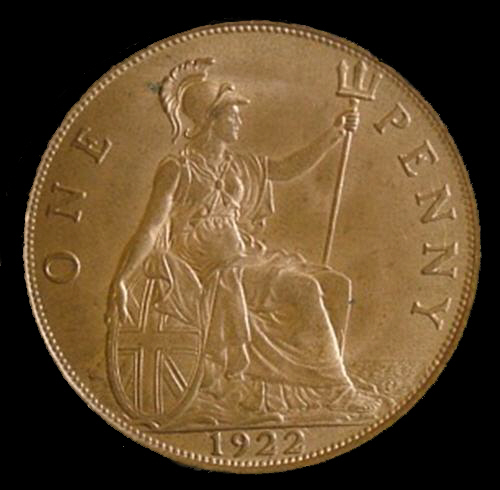
George V 1910-1936 AD Copper Penny
King George V (1910-1936) pennies were produced to the same standard until 1922, but after a three year gap in production the alloy composition was changed in 1925 to 95.5% copper, 3% tin , and 1.5% zinc, although the weight remained at ? oz (9.4 grams) and the diameter 31 millimetres. The inscription around the three variations of the left-facing king's head remained GEORGIVS V DEI GRA BRITT OMN REX FID DEF IND IMP, while Britannia remained on the reverse, as before. In addition to the Royal Mint in the Tower of London, in 1912, 1918 and 1919 some coins were produced at the Heaton Mint in Birmingham, and are identified by an "H" to the left of the date, and in 1918 and 1919 some were also produced at the Kings Norton Metal Co. Ltd, also in Birmingham, and are identified by "KN" to the left of the date. A special issue of 100 1918 pennies were minted and released into circulation to commemorate World War I. Identifiable by a superscript number 1 to the right of the date, only 3 of these pennies are known to still exist. The last one to sell changed hands for £100,000 in 1969. Pennies were produced in 1911-1922 inclusive, and 1926-1936 inclusive bearing George V's effigy, however the 1933 penny is the great British numismatic rarity of the 20th century - only seven coins were minted, specifically for the king to lay under the foundation stones of new buildings; one of the coins went missing when a church in Leeds was demolished in the 1960s, and its whereabouts is currently unknown.
Solving The Ghosting Problem - New Obverse Designs
Clearly the introduction of the new alloy did not completely solve the ghosting problem, as Sir Bertram Mackennal, the designer of the portrait on the coins of George V, attempted to solve the problem by producing a new obverse design known as the "modified effigy". This was introduced on the halfpennies in 1925, and on the halfcrown, shilling, sixpence, threepence, penny, and farthing in 1926.
One experiment was to alter the bronze alloy, so that between 1920 and 1922, some bronze coins were produced using an alloy of:-
MetalPercentage
Copper95.5
Tin3.0
Zinc1.5
No pennies were minted from 1923 to 1925, but the new alloy was used for all bronze coins from 1923 onwards.
The reduced tin content produced a softer alloy, which allowed the metal to flow more easily on striking, and therefore reduce the ghosting effect, and at the same time reduce die wear and breakage.
Bare head pennies were issued for George V from 1911 to 1936 inclusive.
The obverse design is the same for all dates, bare head, facing left.
Obverse
Bare Head, George V facing left
GEORGIVS V DEI GRA BRITT OMN REX FID DEF IND IMP
Reverse:
The reverse features Britannia, seated left, holding a trident.
The legend reads:- ONE PENNY
King George V (1910-1936) pennies were produced to the same standard until 1922, but after a three year gap in production the alloy composition was changed in 1925 to 95.5% copper, 3% tin , and 1.5% zinc, although the weight remained at ? oz (9.4 grams) and the diameter 31 millimetres. The inscription around the three variations of the left-facing king's head remained GEORGIVS V DEI GRA BRITT OMN REX FID DEF IND IMP, while Britannia remained on the reverse, as before. In addition to the Royal Mint in the Tower of London, in 1912, 1918 and 1919 some coins were produced at the Heaton Mint in Birmingham, and are identified by an "H" to the left of the date, and in 1918 and 1919 some were also produced at the Kings Norton Metal Co. Ltd, also in Birmingham, and are identified by "KN" to the left of the date. A special issue of 100 1918 pennies were minted and released into circulation to commemorate World War I. Identifiable by a superscript number 1 to the right of the date, only 3 of these pennies are known to still exist. The last one to sell changed hands for £100,000 in 1969. Pennies were produced in 1911-1922 inclusive, and 1926-1936 inclusive bearing George V's effigy, however the 1933 penny is the great British numismatic rarity of the 20th century - only seven coins were minted, specifically for the king to lay under the foundation stones of new buildings; one of the coins went missing when a church in Leeds was demolished in the 1960s, and its whereabouts is currently unknown.
Solving The Ghosting Problem - New Obverse Designs
Clearly the introduction of the new alloy did not completely solve the ghosting problem, as Sir Bertram Mackennal, the designer of the portrait on the coins of George V, attempted to solve the problem by producing a new obverse design known as the "modified effigy". This was introduced on the halfpennies in 1925, and on the halfcrown, shilling, sixpence, threepence, penny, and farthing in 1926.
One experiment was to alter the bronze alloy, so that between 1920 and 1922, some bronze coins were produced using an alloy of:-
MetalPercentage
Copper95.5
Tin3.0
Zinc1.5
No pennies were minted from 1923 to 1925, but the new alloy was used for all bronze coins from 1923 onwards.
The reduced tin content produced a softer alloy, which allowed the metal to flow more easily on striking, and therefore reduce the ghosting effect, and at the same time reduce die wear and breakage.
Bare head pennies were issued for George V from 1911 to 1936 inclusive.
The obverse design is the same for all dates, bare head, facing left.
Obverse
Bare Head, George V facing left
GEORGIVS V DEI GRA BRITT OMN REX FID DEF IND IMP
Reverse:
The reverse features Britannia, seated left, holding a trident.
The legend reads:- ONE PENNY

Royal Monarchy
Copyright © All Rights Reserved by Nigel G Wilcox · · E-Mail: ngwilcox100@gmail.com
Penny
Designed by Nigel G Wilcox
INFORMATION - DATA
Pages
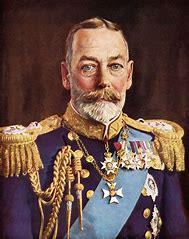
We do NOT buy or sell coins
George V
6. S. Menu
Main Coin Menu

VIEW ALL MENUS
Member NCMD
























